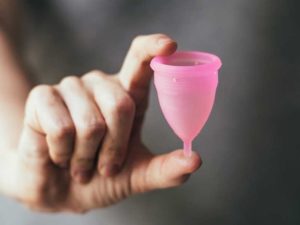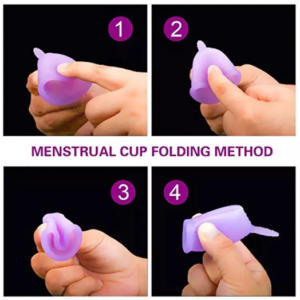By Brianna Green
I started my morning by boiling my menstrual products. You might be wondering, “Brianna, why would you do that? Most menstrual products are made from cotton (or whatever).” You would be correct, products like tampons and pads are made from “a combination of absorbent fibers, both natural and synthetic, including cotton and rayon.” Boiling those would probably lead to a gross, soggy mess.

However, I use menstrual cups. Menstrual cups are an eco-friendly alternative to one-use products such as tampons and pads. The menstrual cups I use are made from silicone—I paid $25 for four cups that should each last roughly 3-5 years. I boil my cups before and after every cycle to sanitize them. While menstruating, I clean them by running them under steaming hot water for one minute with odor-free soap. (HealthLine has some great cleaning tips for beginners and those on the road.) Unlike tampons and pads, I can keep my cups in for 12 hours a day without needing to switch them out every time I use the bathroom.
Now you might be wondering, “Brianna, these menstrual cups sound really cool, but what’s the catch?” In all honestly, that’s a great question to ask. Menstrual cups can be pretty pricy up front. I bought cheap cups, but name-brand cups like the DivaCup can cost up to $32 for one cup. Not only that, but they’re a little messier to clean up. When you take one out that’s covered in blood, you have to carry it to the stink to wash it off instead of immediately tossing it in the trash. Similarly, if you’re like me, you set the bloody cup down on a surface (for me it’s my bathtub) while putting in a clean cup. Having to clean up a bloody cup and surface might sound unappealing to some.

The last downside I can think of is the learning curve. Putting in and taking out a cup is not as easy as a tampon. Since the top of the cup is wide, you have to fold it to insert it. This diagram shows the easiest way to fold a cup. Once the cup has been inserted, you have to make sure that it unfolds completely so it doesn’t leak. I’m almost a year into using period cups and I still have days where I end up leaking. Similarly, taking out the cup can be painful if you don’t partially fold the cup up first.
Despite these downsides, I really enjoy using my menstrual cups. For me, I enjoy that they’re eco-friendly, reusable, will last for years, that they’re cheaper than other products over time, and that I don’t have to worry about them for a whole 12 hours. If this this product sounds like something you’d want to try, I would highly suggest it! Maybe start by buying one cup to see how you like it, and, if you do, slowly make the transition from there.
However, not everyone has access to period cups or common menstrual products like tampons and pads. If you’re a person who menstruates and you need access to these common products, remember that you can get FREE pads and tampons at the Women’s Center at 105 Haag Hall OR at the Hospital Hill Library. Happy menstruating!